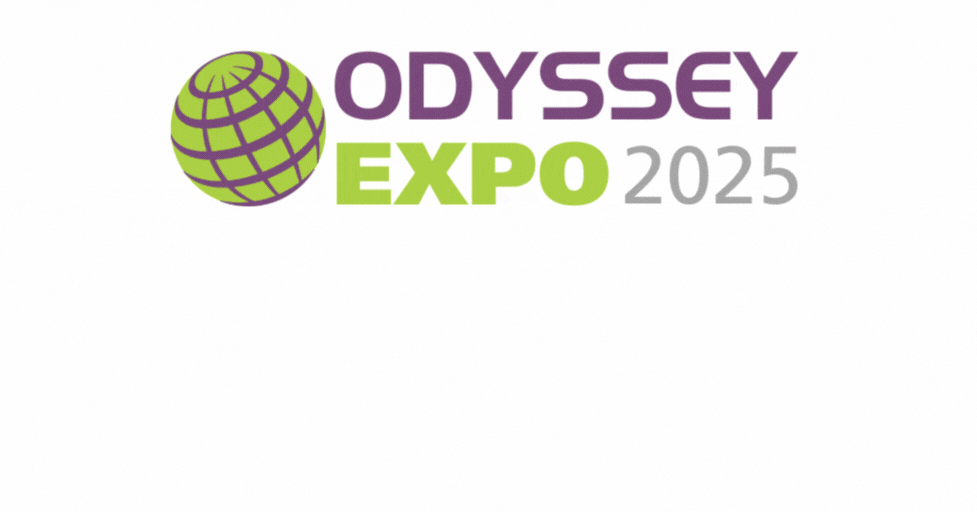President's Column - February 2025
In last month’s column, I shared that my family and I would be moving to Switzerland and touched on several of the motivating factors for taking on the challenge. There will be lessons learned, memories made and a whole new world to experience. But before we begin our new adventure, we have to get there first. As I’m writing, we have about three weeks until the big day.
I can now confirm, moving internationally is a monumental undertaking, one that challenges both your organizational skills and your emotional resilience. As I reflect on my own experience with such a move, I’ve come to realize that the lessons learned from this process have profound applications in leadership, project management and personal growth. From the intricate logistics involved to the emotional decisions about what to keep and what to leave behind, an overseas move is a masterclass in prioritization and adaptability.
At the heart of an international move lies an intricate web of logistics. From securing visas and navigating custom regulations to coordinating with moving companies and setting up a new home, and enrolling the kids in school, (two different schools to keep us on our toes!) the sheer volume of tasks can feel overwhelming. Success in this phase requires meticulous planning and time to pull it off. We felt we had a good plan, but time is another story.
Having a good plan clearly helps immensely, but the true test lies in its execution. A plan, no matter how detailed, obviously must be actively carried out to ensure success. This is where I think I fell into a false sense of security and preparedness. I would go room to room or garage and shed, have a look around and feel like we are under control. I had a plan for everything. Also, worth noting, at the time of writing, we are in peak holiday mode. Christmas is a few short days away. This means there is no lack of holiday events to attend and friends and family stopping by. I felt we were in a good spot thanks to “my plan,” but as each new person that stopped over said, “wow, doesn’t even look like you’re moving” or “I would have expected boxes everywhere,” a bit of panic set in and we began to question how far are we behind schedule? So now we are officially in go mode!
One of the key strategies needed was breaking the move into smaller, more manageable phases. By categorizing tasks into pre-move, logistics and post-move stages, I was able to focus on immediate priorities without losing sight of the bigger picture. This has honestly always been a challenge for me. I’m someone that prefers to “bang it out” in one shot. This is not always ideal, as we may find we don’t have everything needed, and it may be too late to do something about it. This adds to stress levels and simply isn’t possible for all projects. Being forced to work through things a little each day, seeing the progress made, has been a great teaching moment for me. This approach is equally effective in managing large projects in professional settings, where clear milestones and a phased strategy can prevent becoming overwhelmed and keep teams aligned.
One of the major parts of the move is paperwork. I was expecting there to be a lot, but the amount involved is endless. Certified copies of documents, needing to be sent to multiple locations, official translations, school and medical records need to be submitted, in-person visits to the consulate; the list goes on and on. And while we do try and complete everything in small batches now, lists are key. We need a list for our lists. I now have a large whiteboard in the kitchen to keep everything straight. Problem is that as much as we are getting done and I can finally cross some things off, we just keep adding more!
We, of course, didn’t expect any of this to be easy. Relocating two young kids, navigating new school systems was certainly going to present some challenges. What we did not take into account was the requirements for bringing a dog along for the adventure.
Very early into the process, we identified mid-January as the target for the move. Now in late December, our house is ready to be put on the rental market, visas are in order, the shipping container is scheduled. We have a lease in a temporary apartment waiting for us. But having the dog’s paperwork in order is what actually may knock us off track. Relocating a dog turned out to be the most intricate process. Did you know a dog needs a passport? As well as a list of vaccinations, given on very specific dates in relation to the move? Trying to make vet appointments to have everything fall into place has been exhausting.
But this is just another exercise in project management and sorting through the red tape, bureaucracy and politics we unfortunately find in our day to day businesses. In my new role, the reason for the move, this is a major aspect of it. Streamlining of processes can make or break a product or service. A company may come to market with the latest, greatest widget, but if it’s bogged down by an ineffective procedure, it is doomed from the start. Being able to filter and balance what steps are key and what can be optimized or even eliminated, is fundamental.
Since accepting the position, I’ve sharpened my project management skills, learned some new methods on tackling large scale endeavors, and have been forced to be more organized. But one aspect that no training or practice can help with is deciding what to bring and what to leave behind. Every item represents a choice, a moment to reflect on its utility, sentimentality and relevance to your future life. Sorting through possessions forces you to confront your priorities and make tough decisions.
I touched on this aspect in last month’s message and related it to the business world as well as stepping in as President. What ideas, initiatives and “the way we’ve always done it’ continue to add value, and what needs to be reimagined? Going through all of this, I can now say, what is needed for there to be any meaningful change is honesty. I mentioned earlier that I’ve done several rounds of purging through each room. A few weeks ago, I kept those pants because I do plan to lose a few pounds and they will fit again. I’m going to keep that book that has been on the shelf for years because I’m finally going to have time to read it. That stuff I bought for a new hobby that I never really got into has to go because I’ll do it over there. We’ve found that the closer the move date comes, the more practical and emotionless we must be. The more honest I have to be. As the volume of what we are bringing becomes clear, I’ve had to go back through rooms or the garage numerous times, with an honest eye and recognize, maybe even admit, you aren’t going to read that book or take up that hobby, let it go. There is still hope to get a bit more fit, but I’ll just get some new pants when it finally happens.
This is my last lesson learned: When we are trying to make changes, set targets and objectives, build timelines and establish expectations, are we being honest? Are we being realistic? If we are trying to grow a business or evolve as an association, are we taking honest stock of where we are and where we want to go? Not an easy exercise.
Hopefully, by next column, I can share that a successful move is behind us and we are ready to start our new life. Confident that will be the case, but I’m sure I’ll have some tales of the unforeseen trials and tribulations we went through to do it.
![]()
Rob has 26 years of experience at Bobst, one of the world’s leading suppliers of substrate processing, printing and converting equipment and services for the label, flexible packaging, folding carton and corrugated board industries. He currently serves as Head of Service Product Portfolio.
Rob is based in New Jersey, with his wife Monica and their children, Khai, Leo and Manuela. He enjoys camping, golfing and cooking as well as being a full time chauffeur to hockey and swimming practices.
Rob is proof that being one of those “take it apart and see how it works” kind of guys can lead you to a wonderful career, meeting new people and experiencing the world.
The President's Column appears in The Cutting Edge, the IADD's monthly magazine.


